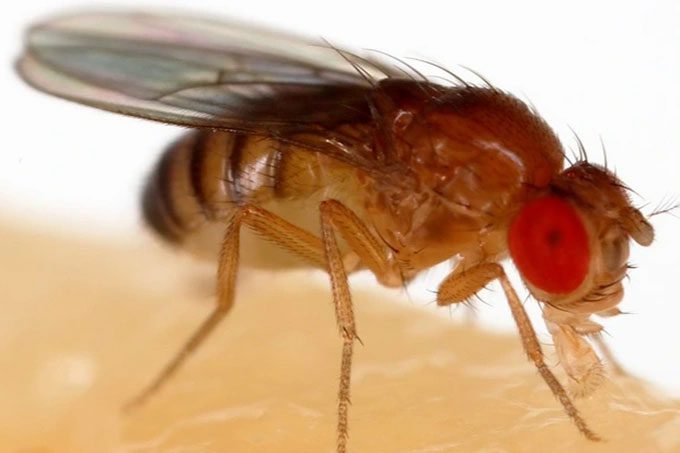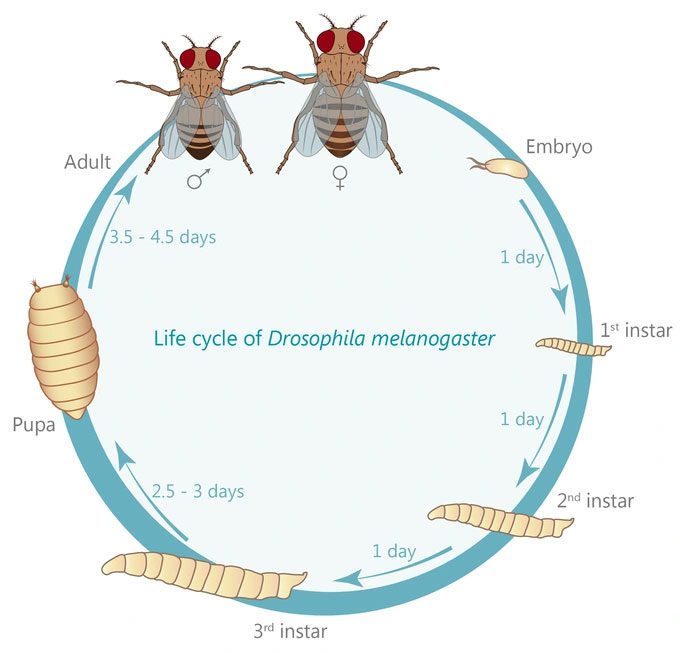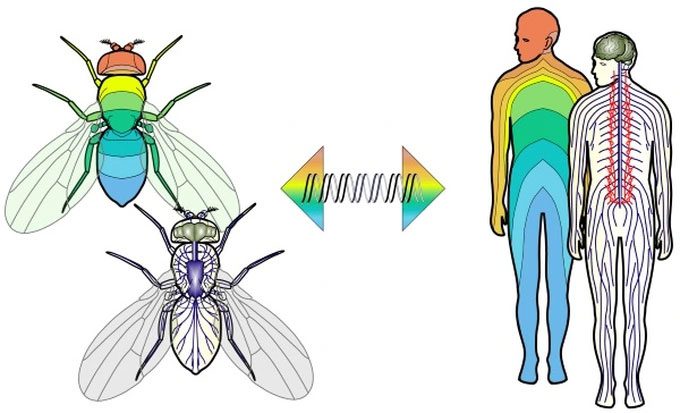Flies can cause many annoyances in daily life. However, from a scientific perspective, they have truly created an extraordinary revolution.
Like mosquitoes, flies belong to the order Diptera – a group of insects with two wings – and are known for more harmful traits than beneficial ones. However, we should not judge this insect species solely based on their negative behaviors.

A fruit fly perched on a banana. (Photo: Wikimedia Commons).
In her book “The Secret Life of Flies“, author Erica McAlister, a British entomologist, praises the role of flies in nature. She writes: “Imagine a world without flies to decompose animal carcasses.”
Fruit flies (Scientific name: Drosophila melanogaster) were first mentioned by the German entomologist Johann Meigen in 1830. Since then, they have become the most well-understood organism on the planet and serve as a crucial tool in modern medical research.
Statistics show that up to 10 scientists studying Drosophila have been awarded the Nobel Prize in Physiology or Medicine. Additionally, more than 10,000 researchers worldwide are currently working with fruit flies across various scientific fields.
Agents of Breakthroughs in Science
In the early 1900s, biologist Thomas Hunt Morgan at Columbia University in New York decided to test evolutionary theories, particularly Gregor Mendel’s theory of inheritance, alongside gene mutation methods on fruit flies.
His mass breeding experiments produced an average of 100 fruit fly eggs each day and allowed for the creation of a new generation of fruit flies in about 10 days.

The life cycle of the fruit fly. (Photo: Walter-lab).
From these experiments, Morgan discovered a single fruit fly with white eyes, instead of the typical red eyes found in common fruit flies.
By conducting in-depth studies on this unique individual, Morgan demonstrated that genes could mutate and be organized into orderly maps, allowing for replication on entirely new chromosomes.
This discovery laid a solid foundation for the field of classical genetics as we know it today. It also helped answer humanity’s questions regarding the transmission mechanisms of certain genetic diseases.
In the 1940s, two scientists, George Beadle and Edward Tatum, successfully proved that certain gene codes in fruit flies could facilitate chemical reactions and produce essential molecules in cells.
In 1995, three scientists were awarded the Nobel Prize for their contributions related to gene networks, where components of genes interact to control a specific cellular function, thereby determining body development and how genetic disorders occur.
Comparing the Gene Sets of Flies and Humans
Humans and flies differ in both shape and body structure. We are higher animals, while flies are merely lower insects.
This comparison may sound awkward, but in reality, scientists have discovered that the gene sets of flies and humans share astonishing similarities.
Many human genes can even perform equivalent functions to those of fruit flies when introduced into their gene sets.

The gene sets of flies and humans share remarkable similarities. (Photo: Brandeis University).
It seems that a common ancestor created the evolutionary lines of flies and humans around half a billion years ago. They are equipped with a biological system so perfect that many aspects of it remain preserved to this day, such as growth mechanisms or the functions of nerve cells.
Because humans and flies are so genetically similar, many biological aspects of humans, including infectious diseases, have been decoded by science thanks to this insect.
Research on fruit flies is also regarded as a fast, cost-effective, and extremely flexible method for scientific discoveries.
According to Sciencealert, it is estimated that more than 10,000 researchers worldwide are working with fruit flies in various scientific fields related to biology and human diseases.
Prominent fields include research on cancer, aging, development processes, gut microbiota, stem cells, and muscle and heart functions…
Additionally, this insect is also a subject used by neuroscientists to study learning, memory, sleep, aggression, addiction, and neurological disorders.


















































